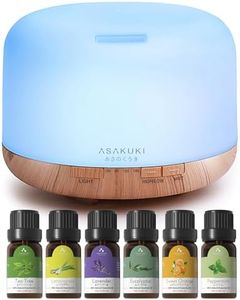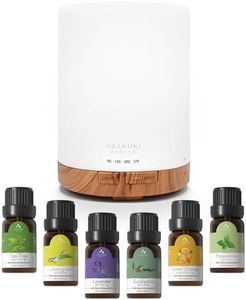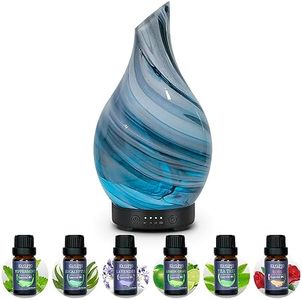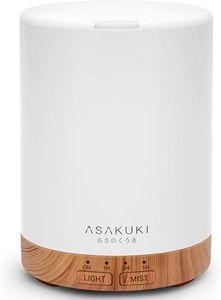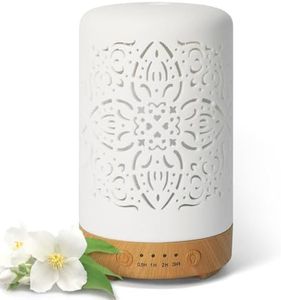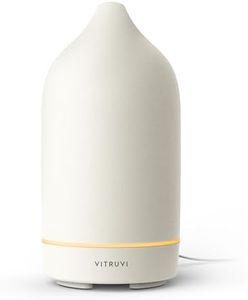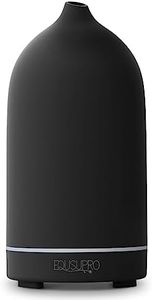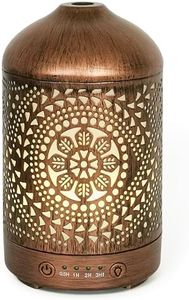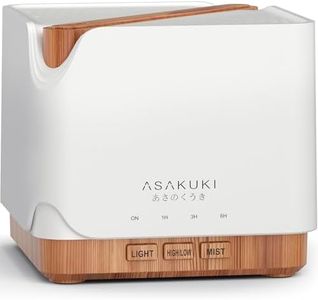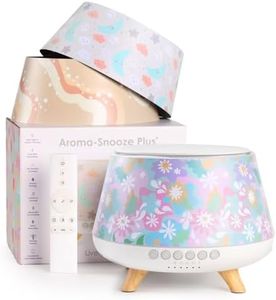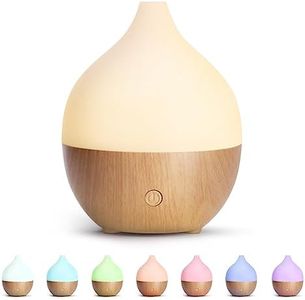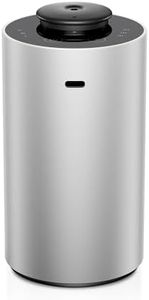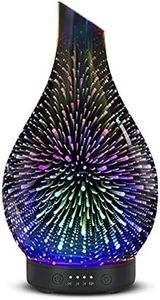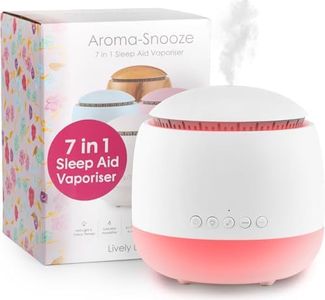We Use CookiesWe use cookies to enhance the security, performance,
functionality and for analytical and promotional activities. By continuing to browse this site you
are agreeing to our privacy policy
10 Best Essential Oil Diffusers
From leading brands and best sellers available on the web.Buying Guide for the Best Essential Oil Diffusers
Choosing an essential oil diffuser can make a big difference in your home or workspace, affecting how you enjoy scents and even how the air feels. To pick the best diffuser for your needs, it helps to understand the main types and how specific features can impact both the experience and maintenance. Think about factors like the size of the space you want to scent, how long you want the diffuser to run, and your preferences for ease of use and cleaning.Diffuser TypeThe diffuser type refers to how the device disperses essential oils into the air. The main types are ultrasonic, nebulizing, heat, and evaporative. Ultrasonic diffusers use water and vibrations to create a mist, which is suitable for adding humidity and gentle scent; they're often quiet and good for bedrooms or small spaces. Nebulizing diffusers use air pressure to atomize oils directly, resulting in a strong scent and no water needed, great for larger or open spaces but they tend to use oils faster. Heat diffusers use warmth to spread the scent, but heat can change the oil's properties and may not offer as pure an aroma. Evaporative diffusers use a fan or air flow to help the oils evaporate more quickly, which is simple but can give uneven scent over time. Choose based on your preference for scent intensity, maintenance, and whether you'd like to humidify the air as well.
Water CapacityWater capacity determines how much water the diffuser holds and influences both how long it can run and how strong the output is. Small-capacity diffusers (up to 100ml) typically run for a few hours and suit smaller rooms or short sessions. Medium capacities (100-300ml) run for 4-8 hours and cover medium-sized rooms, while large capacity (300ml and above) can go overnight or longer, fitting larger areas. Consider how often you want to refill and the size of your space: smaller rooms need less, whereas open spaces benefit from a larger tank.
Run Time and Timer SettingsRun time is how long the diffuser can continuously operate before needing a refill, while timer settings let you customize operation, such as setting it to run for 1, 3, or 6 hours, or on an intermittent cycle. If you want aroma while sleeping or during work without worrying about the device, longer run times and flexibility in timing are helpful. For short relaxation sessions, shorter timers are enough. Choose based on when and how long you want to use the diffuser.
Mist Output LevelsMist output refers to how much scented mist the diffuser produces, which can usually be set to low, medium, or high. Low settings fill small rooms gently or last longer, while high settings quickly scent large spaces but use up water and oil faster. If you need to adjust scent intensity for different occasions or spaces, look for a diffuser with variable mist output. Think about whether you want subtle background fragrance or quick, noticeable aroma.
Noise LevelNoise level is how loud the diffuser sounds when operating. Ultrasonic models are generally quieter, making them a good fit for bedrooms, nurseries, or offices where silence matters. Some nebulizing or fan-based designs may be a bit noisier. If you’re sensitive to noise or want to relax or sleep near your diffuser, opt for a model that’s noted for its quiet operation.
Light FeaturesMany diffusers have LED lights that can switch colors or act as a nightlight. This feature is purely optional but can add to the ambiance, help with relaxation, or be useful as a gentle light source in the evening. Some people find moving lights distracting while others enjoy them; choose based on whether you want visual effects to go with your aromatherapy.
Ease of CleaningKeeping your diffuser clean is important to prevent mold and keep scents pure. Models with wide openings and simple construction are easier to clean, while units with lots of small parts can be more time-consuming. If you plan to use your diffuser regularly or switch oils often, pick a design you can clean out quickly to keep performance and hygiene at their best.
Auto Shut-offAuto shut-off means the diffuser will turn itself off when it runs out of water, preventing damage and improving safety. This is especially important if you plan to run your diffuser when you’re asleep or out of the room. Always look for this feature as a basic safety measure, especially if you’re not able to watch it constantly.
